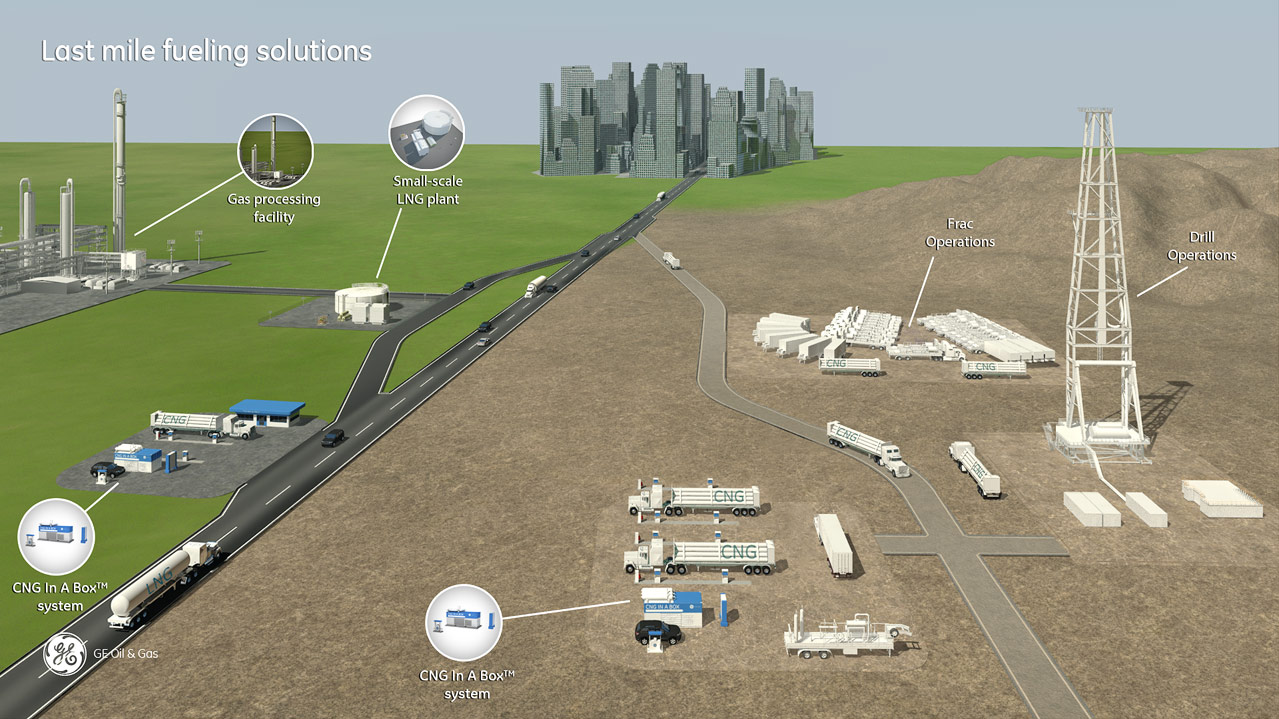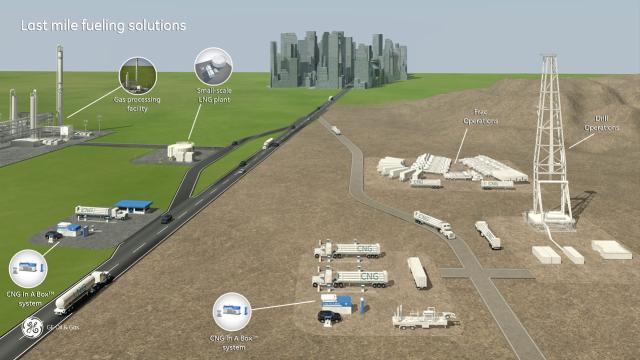America is undergoing a fossil fuel renaissance thanks to a resurgent natural gas industry. But with many new wells being built far from existing oil pipelines, crews often vent excess gas. One such field in North Dakota is putting that gas to work running the company’s fleet of field equipment.
The natural gas industry has long employed vehicles that run on the same fuel its fields produce, but traditionally these vehicles have had to drive out to CNG filling stations, or have remotely-processed NG delivered in order to refuel. Meanwhile, companies were burning excess gas supplies from their wells because they had no means of delivering it to market or utilising it locally. According to a report by the The Wall Street Journal, in April of this year wells in South Dakota burned off 10.3 billion standard cubic feet — an estimated 30 per cent of their production — worth $US50 million.

The Last Mile Fueling Solution from Statoil, the Norwegian energy company that operates the North Dakota gas field, addresses both problems. The system leverages GE’s CNG-in-a-box technology and logistical-operations support from Ferus Natural Gas.
According to GE Reports:
Statoil runs the oil and gas coming out of the wells through separators that remove the gas. Since separated gas is still “wet” and full of valuable natural gas liquids like propane, butane and natural gasoline, crews send it through other pieces of equipment like the Joule-Thomson skid that take the liquids out for sale to customers. In the past, teams would flare the gas that was left. But the pilot Statoil installation sends this “dry gas” to a mobile compressor designed by GE, which compresses the remaining dry gas from 50 to 2,900 pounds per square inch. The highly-pressurised gas then travels inside Ferus’ tube trailers pulled by heavy duty trucks. They deliver the gas as fuel to rigs and equipment often many miles away.
This method is good for the company and good for the environment. Statoil enjoys lower fueling costs and less wasted product, the atmosphere enjoys fewer greenhouse gas emissions. And given that the number of natural gas wells in America has been growing steadily since 1998 — they totalled just under 500,000 wells in 2012 — any reduction in the number of flare offs is a good thing. [GE – GE Reports]
